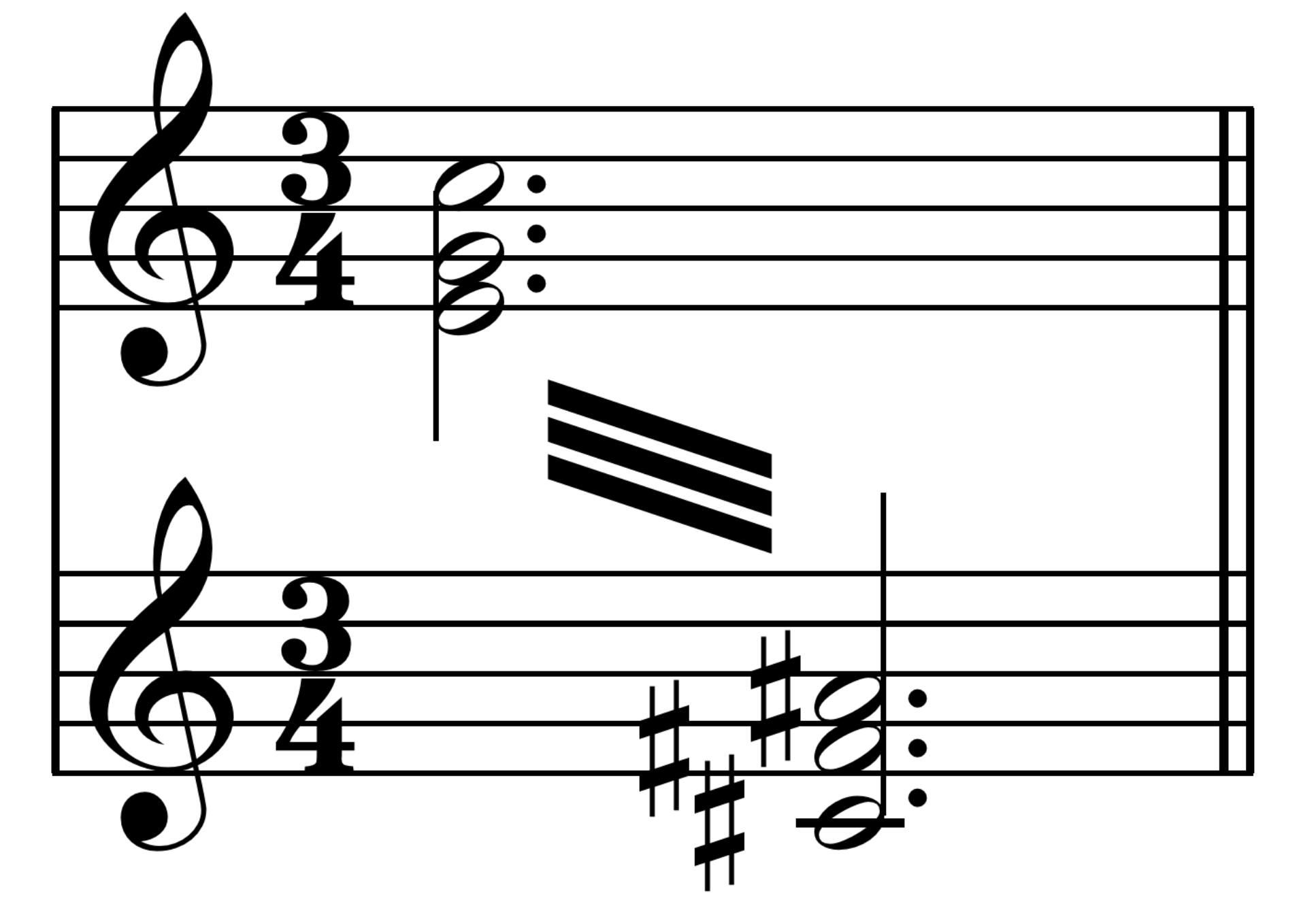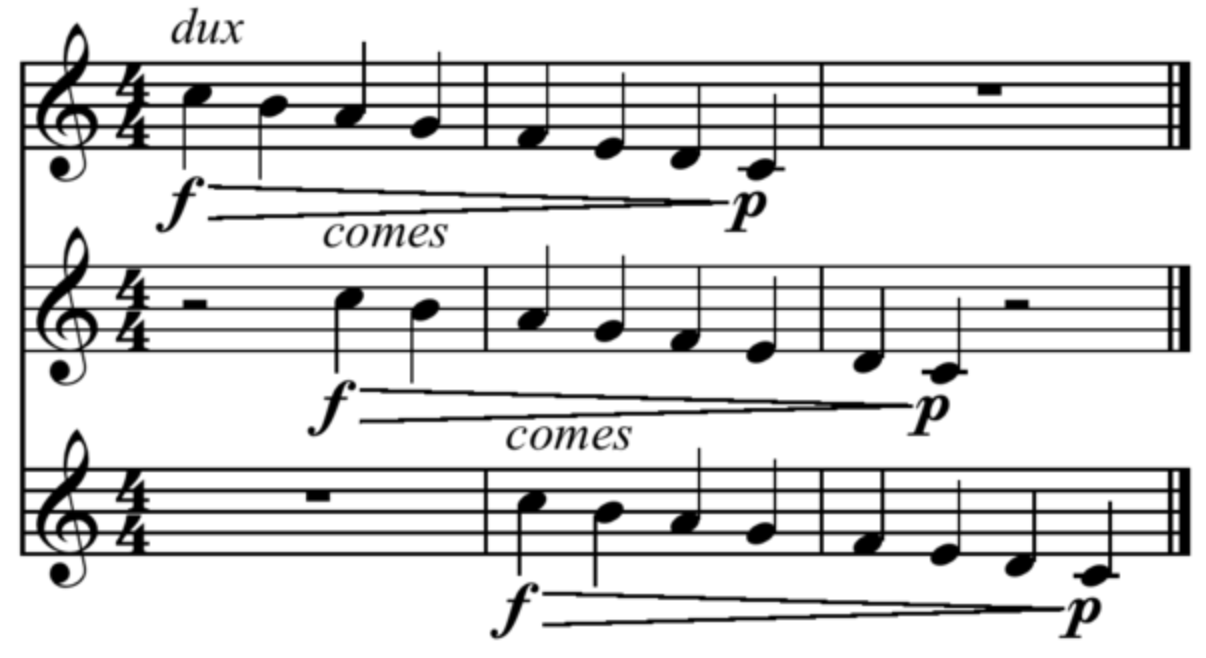HISTORY
Beethoven (1770-1827) composed at the end of the Classical era, and ushered in the Romantic era. He was an extraordinary pianist as well as composer. Beethoven wrote nine symphonies, 16 string quartets plus the Große Fuge, lots and lots of piano music, and well, more (list of works). When he was still a young man, Beethoven went deaf. He wrote a letter to his friend and physician Franz Wegeler in 1801:
“I must confess that I am living a miserable life. For almost two years I have ceased to attend any social functions, just because I find it impossible to say to people: I am deaf. If I had any other profession it would be easier, but in my profession it is a terrible handicap. As for my enemies, of whom I have a fair number, what would they say?”
Even with deafness looming over him, he continued to write, and wrote some of his best works under these conditions. Beethoven was a champion at motivic development. He largely wrote using motivic cells (meaning small ideas that can be moved around and changed with a continuity). String Quartet no. 4 in C minor displays this concept.
ANALYSIS
There is a LOT to analyze in this piece. I am going to look at it from a very simple angle of motivic development. I am not going to provide a formal analysis, because frankly, this may get in the way. I just want to look at the first page. Beethoven treats this opening phrase in two ways. The first way is an overarching melody from measures 1-13. And secondly, this melody is comprised of motivic cells that vary and sequence to provide continuity to the rise and fall of the overarching melody. The whole first page is comprised of this motive,  and this motive
and this motive  .
.
The second motive stems from the first motive. See the pick up G to the C in the first two notes of the piece? Well, extend the interval a little more and give it a little “skip” to it’s rhythmic content (i.e., two eighth notes), and this provides the basis for the next motive. Beethoven travels to different places in the key, so that the listener journeys through the piece and doesn’t stay in one place aurally. After this motive,  he sequences the material up to
he sequences the material up to ![]() . He again sequences the material up, but changes the first interval to a sixth. However, in the middle of this sequence, Beethoven extends his motivic content and transitions into a second motivic cell
. He again sequences the material up, but changes the first interval to a sixth. However, in the middle of this sequence, Beethoven extends his motivic content and transitions into a second motivic cell ![]() . He then sequences this idea up to reach an overall sense of arc to the melody. Overall it looks like this:
. He then sequences this idea up to reach an overall sense of arc to the melody. Overall it looks like this:
![]()
![]()
There are some basic composition tools every composer should have under their belt.
SEQUENCING
– What Beethoven just did. take a motive, or melody, and move it up or down – restate it at a higher or lower pitch. This does not have to be an exact replica, you may change a note or two to your needs.
This general wikipedia page on the subject captures the essence of the sequence quite well, so I’ll let it inform you.
“A real sequence is a sequence where the subsequent segments are exact transpositions of the first segment. A tonal sequence is a sequence where the subsequent segments are diatonic transpositions of the first segments. A modified sequence is a sequence where the subsequent segments are decorated or embellished so as to not destroy the character of the original segment. A false sequence is a literal repetition of the beginning of a figure and stating the rest in sequence.[1] A modulating sequence is a sequence that leads from one tonal center to the next, with each segment technically being in a different key in some sequences.[2] A rhythmic sequence is the repetition of a rhythm with free use of pitches.”
INVERSION
Inversion is basically flipping everything on a horizontal axis. In a melodic inversion for example, you would start on the same note, but if you’re second note originally went up a 3rd, in the inversion, you would go down a third. Watch this video for specifics.

RETROGRADE
Read your material from right to left, instead of left to right – or – A succession of notes played backwards, either retaining or abandoning the original rhythm.

RETROGRADE INVERSION
Material is both inverted and reversed. Just a combination of inversion and retrograde.

BITONALITY
The simultaneous, superimposed presence of two distinct tonalities. A famous example comes from Stravinsky’s Petrushka. There is a C-major chord superimposed on an F sharp-major Chord.


This example also happens to stem from the octatonic scale. Take the octatonic scale that starts with the whole step as the first step. Let’s start on C sharp: C sharp, D sharp, E, F sharp, G, A, A sharp, and C. Can you spot all of those notes in the Petrushka chord? There may be a couple missing, (like D sharp and B) but the chord still stems from that scale.
CANON
A canon is a contrapuntal compositional technique or texture that employs a melody with one or more imitations of the melody played after a given duration.
I barely understand what that means…In my words it just means having the same material overlap itself a little later in time. for example:

Arvo Pärt (1935 – ) wrote a canon called Cantus in Memoriam Benjamin Britten. It is one giant canon in A minor. The work is an early example of Pärt’s tintinnabuli style. “Musically, Pärt’s tintinnabular music is characterized by two types of voice, the first of which (dubbed the “tintinnabular voice”) arpeggiates the tonic triad, and the second of which moves diatonically in stepwise motion.”[1]
